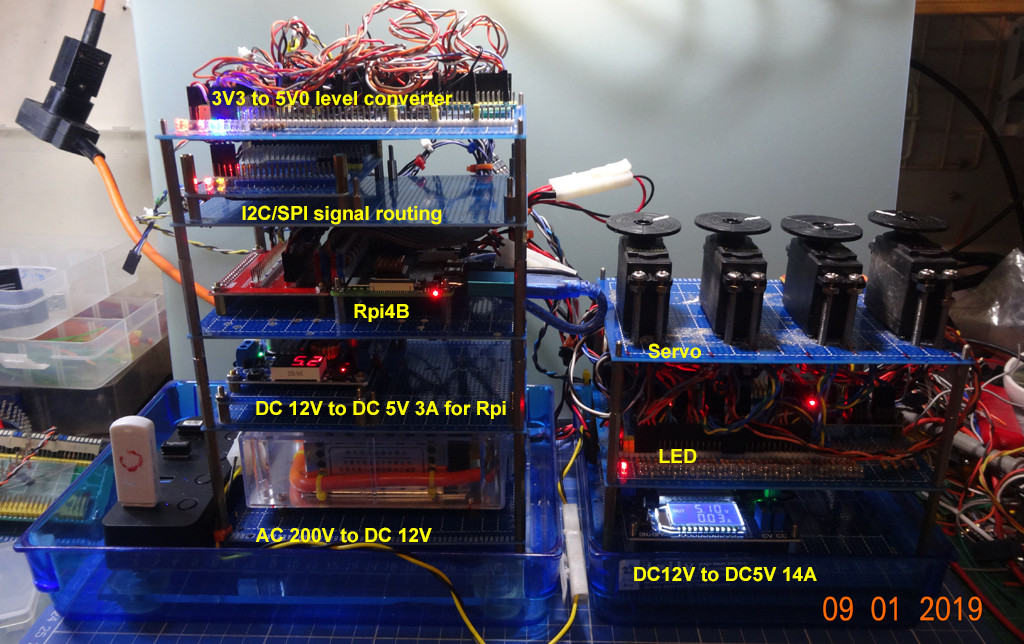Question
How to keep (1) 5V DC power supply for Rpi and (2) 5V DC power supply for external circuits, eg, LEDs, relays etc as steady as possible, say, less than 0.02V fluctuation (ie, "slight dip" in Rpi 40 pin connector 5V power, when switching on LEDs)?
Solution
Use two separate 5V regulated power supplies, one for Rpi, another for external circuit such as LED, relays etc.
There are many ways to avoid the "slight dip" when switching on/off LEDs (or motors and servos) at the same time. One way is to use PCA9685 PMW controller to switch on/off LEDs etc with slightly different, human eyes unnoticeable, start times (say, 0.1% of period of 50Hz). This is also to prevent the EMI when switch off (not on) many serovs/motors at the same time.
Example
(1) Use a 200VAC to 12VDC 3A~5A switching regulated power supply to get a stable 12VDC power supply.
(2) Use Two DC12V to DC5V 3A step down switching regulated power supplies, one for Rpi, another for external circuits such as LED, motor, servo, or relays.
(3) I use 200VAC to 12VDC as the main DC source to step down to two more more 5V sources for Rpi and other circuits. I select 12V rather than 9V, 18V for the following reasons.
(a) Many devices actually use 12V rather than 5V. For example 12V relays are more efficient than 5V relays, 12V RS233 go loner distance that 5V UART, ...
(b) It is easy to find replacement for 12V DC sources, such as car battery, lead acid battery, 3.71 volt LiPo cell x 3 = 11.7V ~= 12V. BTW Batteries are almost noise free, and for applications where you need noise free power, see GPS example in the references below. For low noise low power applications, I only use 200VAC to 12V 1A switching power supplies, ...

References
PSU
Raspberry Pi Zero W solar power setup
Connecting Pi-Zero W to Adafruit Powerboost 1000 through Extension Header or USB
https://www.raspberrypi.org/forums/viewtopic.php?f=37&t=230984&p=1417095&hilit=psu#p1416984
https://www.raspberrypi.org/forums/viewtopic.php?f=37&t=230984&p=1417095&hilit=psu#p1417087
https://www.raspberrypi.org/forums/viewtopic.php?f=37&t=230984&p=1417095&hilit=psu#p1417090
https://www.raspberrypi.org/forums/viewtopic.php?f=37&t=230984&p=1417095&hilit=psu#p1416937
https://www.raspberrypi.org/forums/viewtopic.php?f=37&t=230984&p=1417095&hilit=psu#p1416951
Cut power on a remote Raspberry Pi 3 via another raspi
https://www.raspberrypi.org/forums/viewtopic.php?f=37&t=227137&p=1400274&hilit=PSU#p1400163
Is my GPS module fried?

